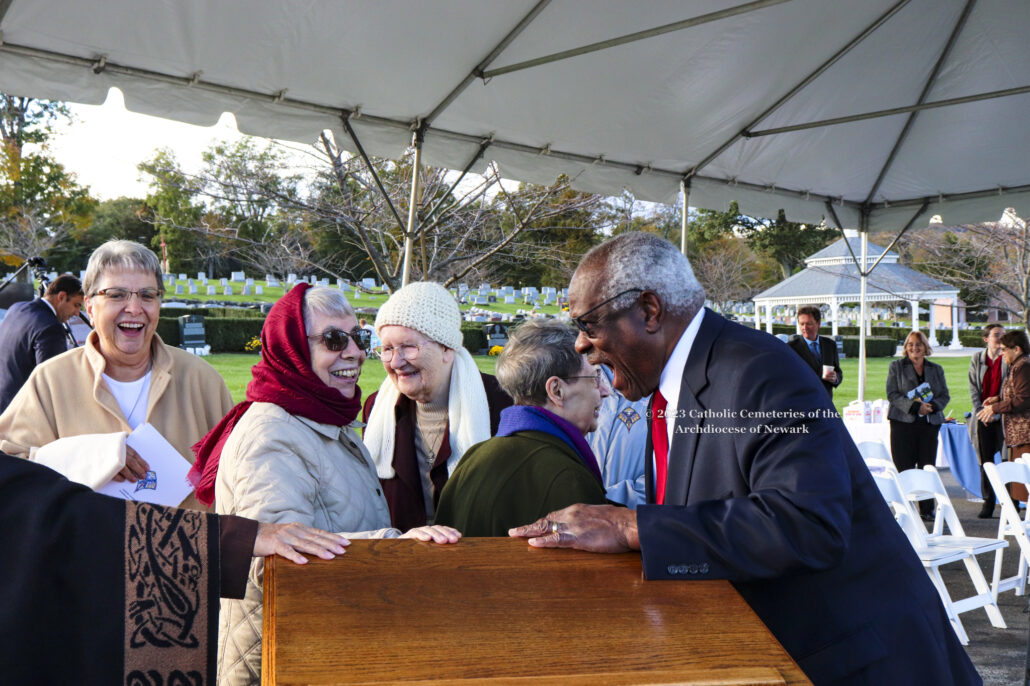News
Beloved Franciscan sister, a life-long mentor of Justice Thomas, honored with statue at Maryrest Cemetery, Mahwah, New Jersey
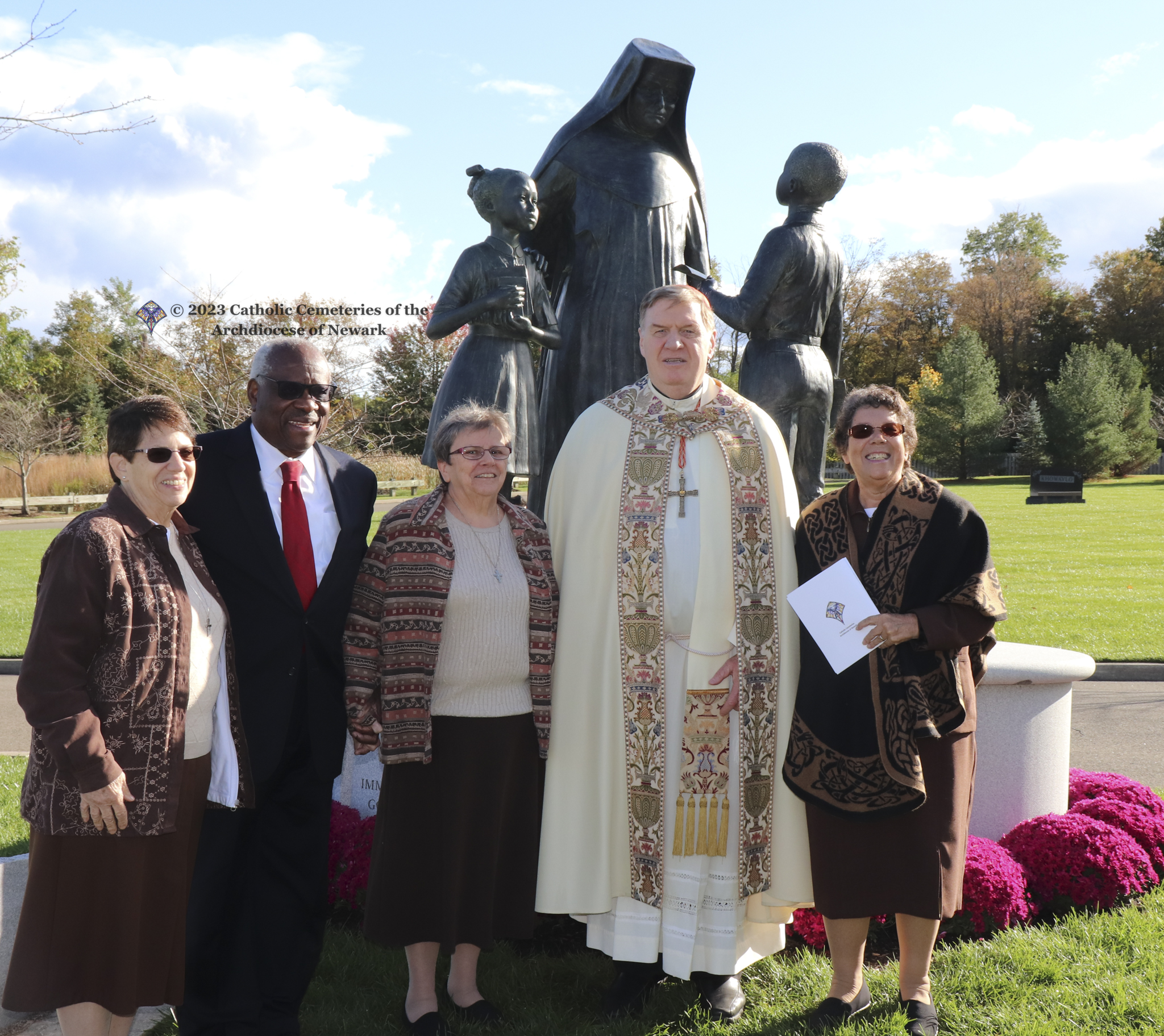
On a chilly October afternoon amid a backdrop of vibrant autumn leaves, several Missionary Franciscan Sisters of the Immaculate Conception stood in Mahwah, New Jersey’s Maryrest Cemetery filled with emotion. Before them was a newly-unveiled 7-foot bronze statue of Sister Mary Virgilius Reidy, one of their own.
As the religious sisters from Our Lady of the Angels Convent in Tenafly admired the statue, which rests a few feet away from her grave, they reflected on her incredible life. One of the convent’s most notable residents, the late Sister Virgilius, was known for her strength and resolve to educate the poorest and most disadvantaged children in the segregated South in the 1950s.
The recent unveiling and dedication of the statue by Catholic Cemeteries of the Archdiocese of Newark brought together a tapestry of communities touched by Sister Virgilius. Among them were second- and third-generation family members from Chicago, other nuns who taught and lived with her, and United States Supreme Court Justice Clarence Thomas, a former student of Sister Virgilius. Thomas, who traveled from Washington, D.C. to witness the blessing of the statue, fought back tears as he thanked his life-long mentor and the other religious sisters who helped blaze his unforeseen path.
“I must admit I melted down because of my nuns,” said Thomas at the unveiling ceremony. “This extraordinary statue is dedicated to you sisters – to all of you who have given so much and who have asked for so little.”
Sister Irene Laurence, Provincial Minister of the Order of the Missionary Franciscans of the Immaculate Conception (MFIC), acknowledged how the statue reflects the work performed by sisters from the Diocese of Savannah, Georgia. She read a tribute to the sisters from 1986 by the combined black parishes of Savannah, including St. Benedict the Moor, St. Mary, and St. Anthony of Padua.
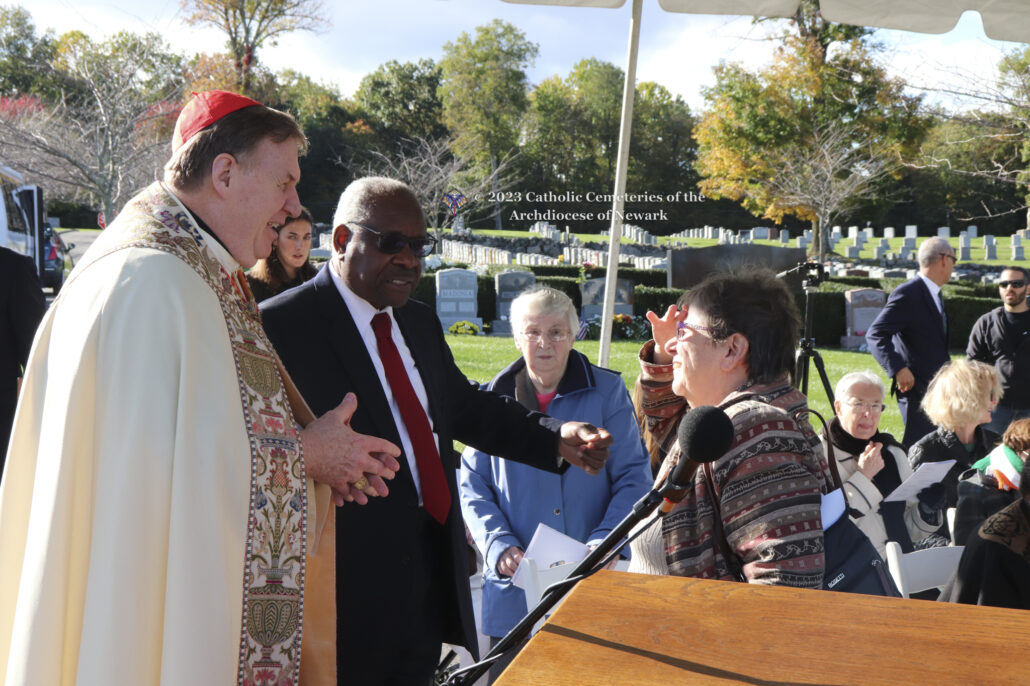
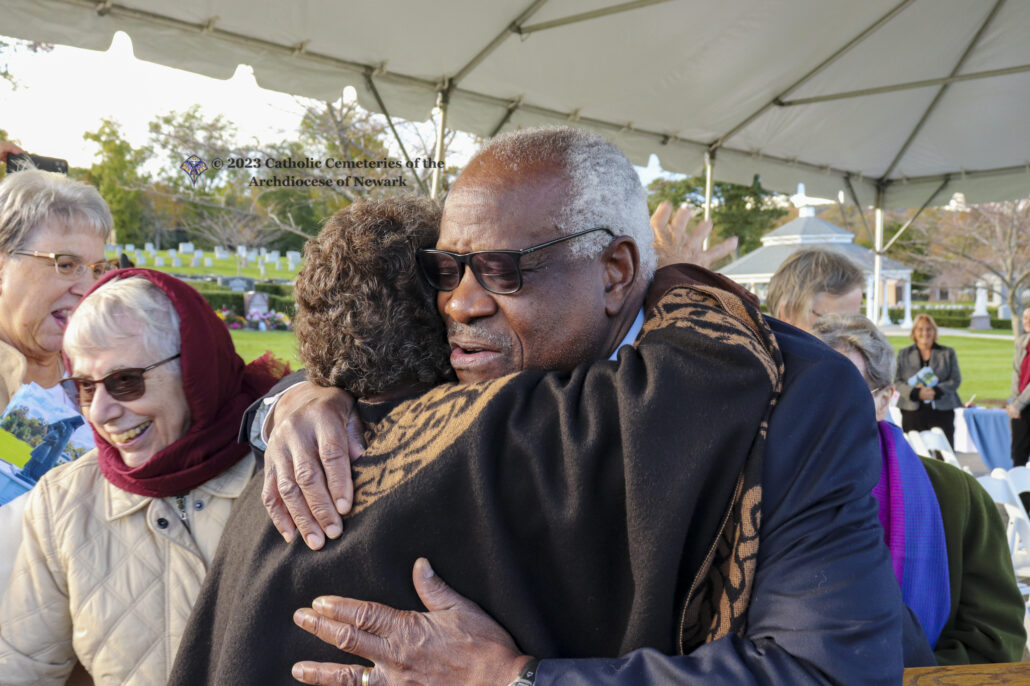
“Thank you, sisters, for being a shoulder to cry on, for teaching us when others rejected us, for spending long hours with no pay, for working in some of the worst conditions, and for giving your all frequently with not even so much as a simple thank you,” read Sister Laurence. “I believe these words speak not only of the respect and love held for our sisters in Savannah but also of Elizabeth Hayes (Sister Mary Ignatius), our foundress, missionary, and her prophetic vision to work with the minority.”
Cardinal Joseph W. Tobin, C.Ss.R., Archbishop of the Archdiocese of Newark, sprinkled Holy water to bless the new statue. He recounted his time living in Rome and exploring cemeteries and miles of catacombs, describing underground passageways filled with the remains of early Christians and images of Christ and other Christian symbols.
Since Roman law prohibited the above-ground burial of the deceased in the city’s interior, the catacombs for early Christians provided underground space to honor and worship their dead.
Cardinal Tobin discussed how the Second Vatican Council placed particular importance on religious life – a life much like the ones lived by the religious sisters present at the ceremony as well as the lives of Sister Virgilius and other nuns resting in peace before them.
“Our service invites us to think about the monument of our lives,” said Cardinal Tobin. “The monuments of Sister Virgilius’s life are here. That beautiful work of art is behind me for her community, her family, and her students. The faith that upheld her to live in a respectful, just, and loving way is also her monument.”
During the ceremony, Justice Thomas thanked real-estate investor and history collector Harlan Crow and his wife Kathy Crow of Dallas, Texas, for their consideration and generosity in honoring Sister Virgilius. They financed the statue’s creation to memorialize “these courageous, selfless and godly women.” Thomas also extended his heartfelt thanks to the nuns.
The bronze statue, designed by noted artist and master sculptor Gary McElhaney of Austin, weighs 1,800 lbs. The two-foot granite base on which it rests is 16,557 lbs. With the supervision of Catholic Cemeteries’ Executive Director, Andrew Schafer, and Construction, Planning & Development Director, Michael Saul, the cemetery staff and a local crane company installed the statue weeks before the dedication.
The likeness of Sister Virgilius stands tall and admirably. Two sculpted children stand next to her. The statue’s base bears three inscriptions: the first, a scriptural verse from Mark 16:15: “Go into the world and proclaim the good news to the whole of creation;” the second inscription dedicates the monument to the Missionary Franciscan Sisters of the Immaculate Conception; the third inscription reads, “We lived with you, and you knew we loved you,” a phrase spoken by Sister Virgilius to Thomas.
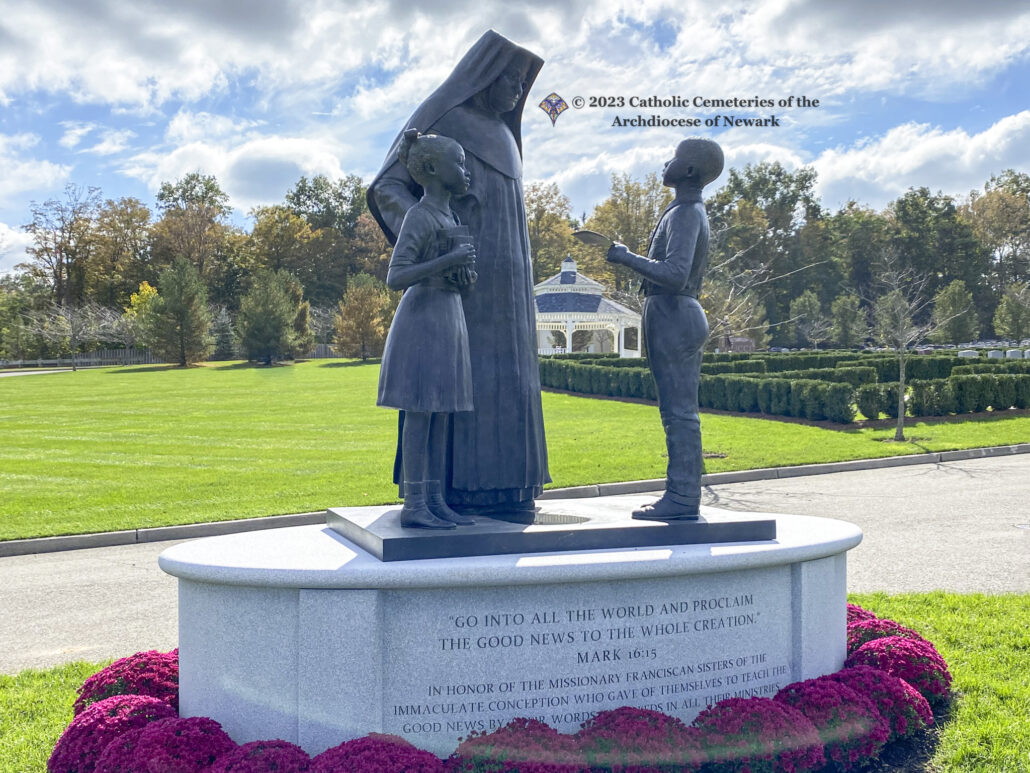
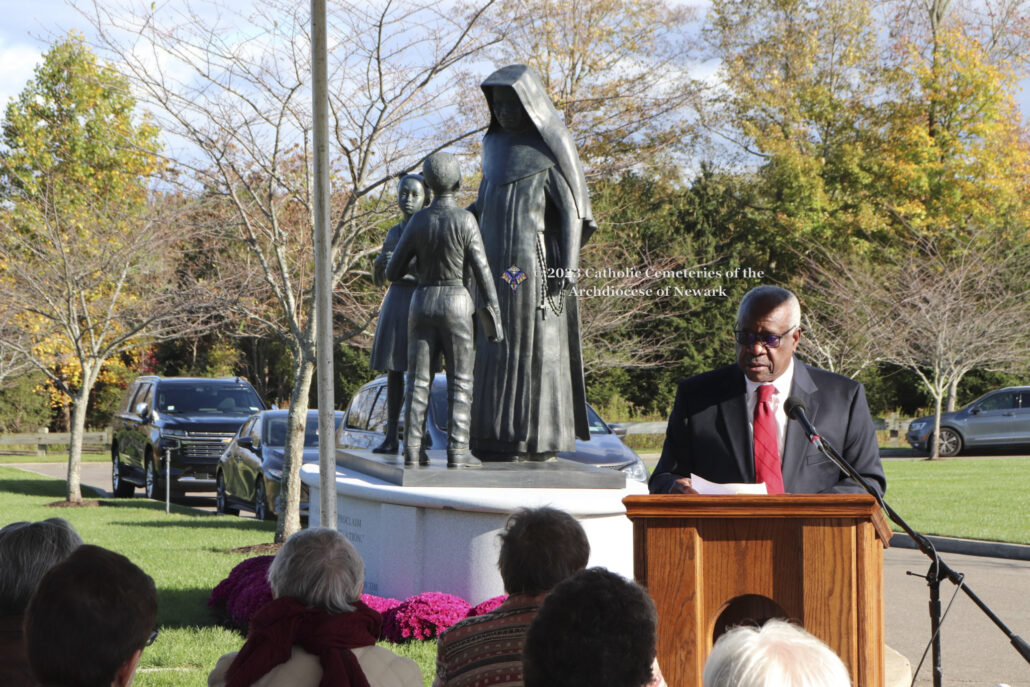
During the ceremony, Thomas reflected on a September morning in 1955, when he started his Catholic education as a second-grader at St. Benedict the Moor Grammar School in Savannah, Georgia. He recalled how the Missionary Franciscan Sisters of the Immaculate Conception and his grandparents, Myers and Tina Anderson, had been central in his life since that day – a story told more profoundly in his book, “My Grandfather’s Son: A Memoir.”
“Even when I wandered in the ‘wilderness’ and left the faith, they continued to tug at me and pray for me,” Thomas said at the statue’s unveiling. “When I reconnected with Sister Mary Virgilius in the early 1980s, my journey home began in earnest. The nun who had terrified me in 1962 hugged, smiled, and held me.”
Thomas recounted that during that visit, he reminded Sister Virgilius of a tough-love moment when she was his eighth-grade teacher and principal. When she saw his high-scoring entrance exam scores for high school, Sister Virgilius called out Thomas for under-performing in his schoolwork, achieving only good grades, and not working harder to get the best grades possible.
“You lazy thing, you!” she said. Thomas never forgot that. They laughed about it years later, but it was a testament to Sister Virgilius’s love and tenacity to push Thomas to higher ground. The extra effort paid off.
Justice Thomas was nominated to the Supreme Court in 1991 by President George H.W. Bush. It was Sister Virgilius who testified before the Senate Judiciary Committee to support Thomas’ nomination.
Despite his national prominence and busy judicial schedule, Thomas continued to make the annual pilgrimage to visit Sister Virgilius for many years. He described feeling enriched and blessed after visiting the convent, which now serves mainly as a retirement and convalescent home for elderly nuns. He attended Sister Virgilius’s funeral when she passed away in 2013 at the age of 100.
In 2018, the convent relocated the graves of 280 nuns from the back of their property to Mahwah’s Maryrest Cemetery to ensure they would be cared for adequately and perpetually. When the convent received the call about placing the statue of Sister Virgilius at Tenafly property, it was decided it was best to place the statue at Maryrest adjacent to the burial place of the 280 nuns.
“I, for one, am immeasurably blessed and profoundly grateful to the Missionary Franciscan Sisters of the Immaculate Conception,” Thomas stated at the ceremony. “They are my nuns. And I’m also grateful for the generosity of my friends who have made this possible.”
“But for you sisters and those saintly women who lie here [in Maryrest Cemetery], this day would not have been possible,” Thomas added. “And my life as it has been would not have been possible. God bless all of you and all of the people you have touched.”
© Catholic Cemeteries of the Archdiocese of Newark, 2023. No part of the materials available through the www.rcancem.org site, including but not limited to photos, videos, or text, may be copied, photocopied, reproduced, translated, or reduced to any electronic medium or machine-readable form, in whole or in part, without the prior written consent of Catholic Cemeteries of the Archdiocese of Newark and the Archdiocese of Newark. Any other reproduction in any form without the permission of Catholic Cemeteries of the Archdiocese of Newark and the Archdiocese of Newark is prohibited. All materials contained on this site are protected by United States copyright law and may not be reproduced, distributed, transmitted, displayed, published, or broadcast without the prior written permission of Catholic Cemeteries of the Archdiocese of Newark and the Archdiocese of Newark. All requests must be submitted in writing to the Office of Communications of the Archdiocese of Newark.
